Growing a pineapple plant is an exciting and rewarding endeavor, especially for those who love tropical flavors and unique gardening challenges.
As a gardening enthusiast who enjoys tropical plants, I find growing pineapples to be a particularly delightful experience.
It’s fascinating to watch a pineapple grow from a simple top cutting into a thriving plant that eventually bears fruit.
In this article, we’ll explore the benefits of growing pineapple plants, discuss some of my favorite varieties, and provide essential care tips to help you successfully cultivate your pineapple plant.
Benefits of Growing Pineapple
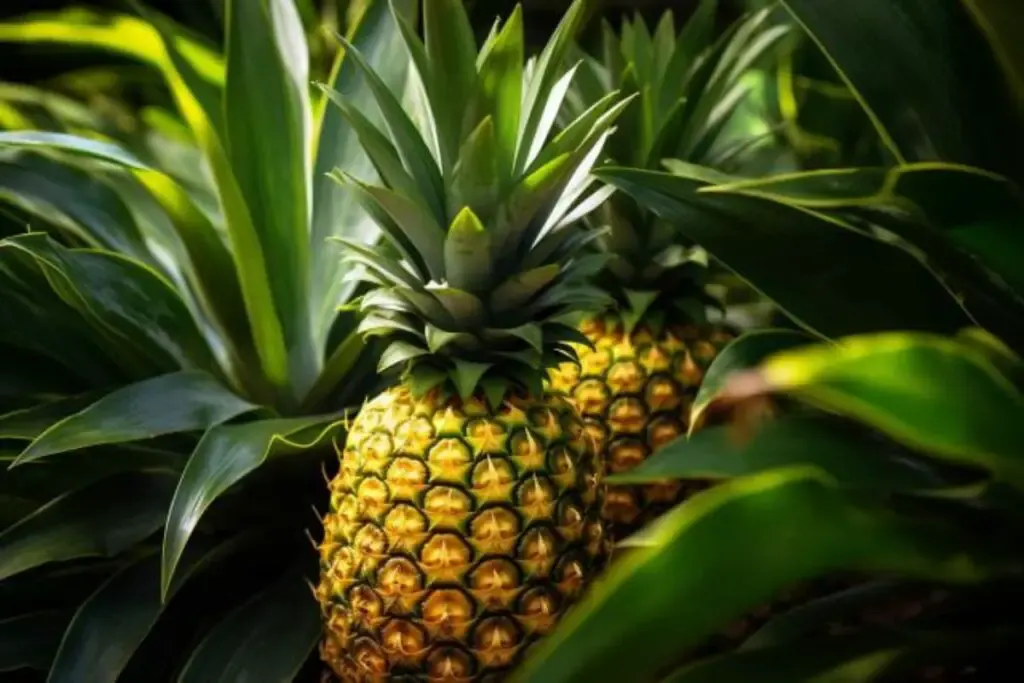
1. Homegrown Sweetness
There’s nothing quite like the taste of a freshly harvested pineapple. Homegrown pineapples tend to be sweeter and more flavorful than those bought from a store, mainly because they can be harvested at peak ripeness.
2. Ornamental Appeal
Pineapple plants, with their spiky leaves and exotic appearance, make for stunning ornamental additions to any home garden or indoor space. They bring a touch of the tropics to your environment.
3. Air Purification
Like many plants, pineapples contribute to purifying the air. They release oxygen and improve air quality, making them a healthy addition to your indoor or outdoor garden.
My Favorite Pineapple Varieties
Pineapple plants come in various varieties, each with its unique characteristics and flavors.
Here are three varieties that I particularly enjoy:
1. Smooth Cayenne
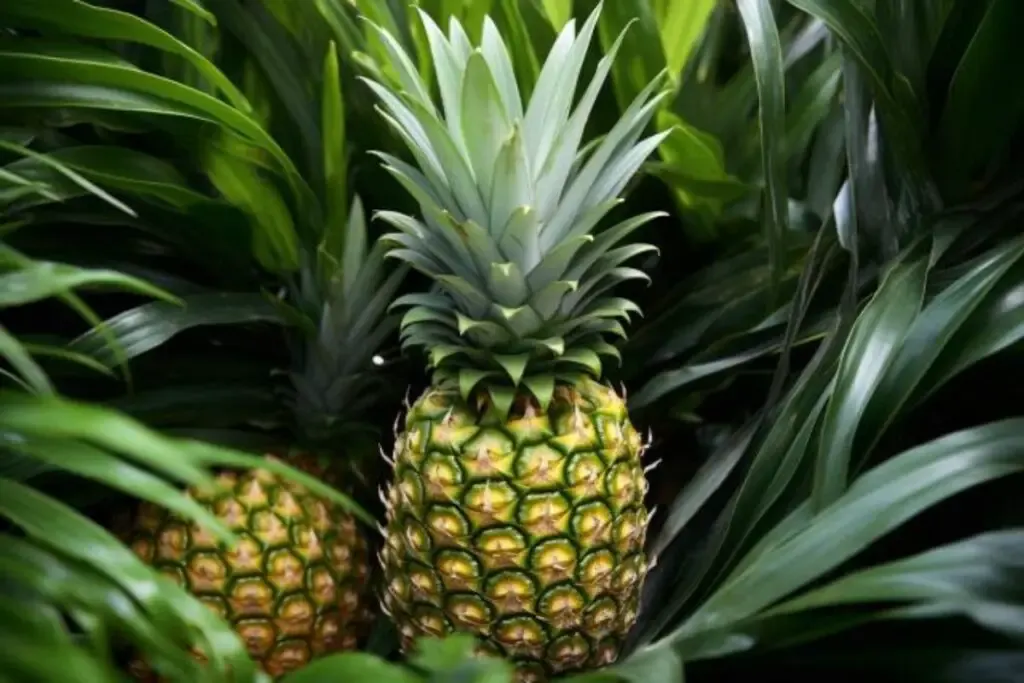
This is the most commonly grown variety worldwide and the easiest for beginners. It produces large, sweet fruits with a high sugar and acid content, making them perfect for fresh consumption and canning.
2. Red Spanish
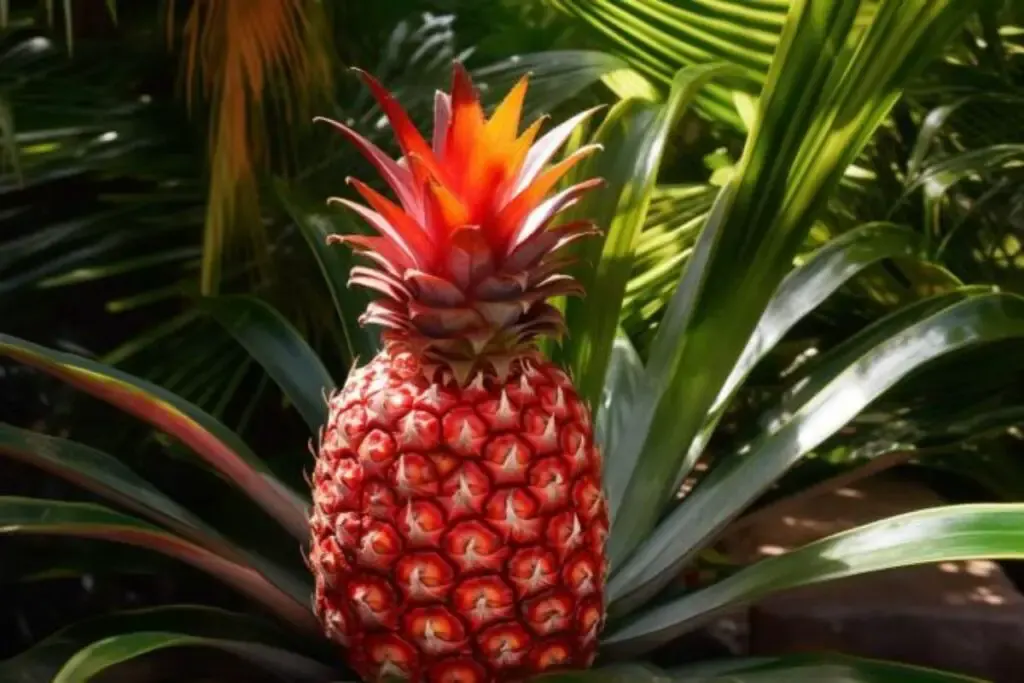
Known for its striking reddish-brown skin and excellent disease resistance, Red Spanish pineapples are robust and flavorful. They are slightly less sweet than the Smooth Cayenne but have a wonderful aroma.
3. Sugarloaf

If you prefer a sweeter, less acidic pineapple, Sugarloaf might be your choice. This variety is known for its white, tender flesh and low acidity, making it a favorite for fresh eating.
It’s a bit more challenging to grow but worth the effort for its delightful taste.
Pineapple Care
Caring for a pineapple plant can be a fun and educational experience. These tropical plants have specific needs that, when met, can lead to a successful and rewarding harvest.
Let’s delve into the key aspects of pineapple care, covering planting, light requirements, soil preferences, water needs, temperature and humidity conditions, and fertilizer use.
Planting
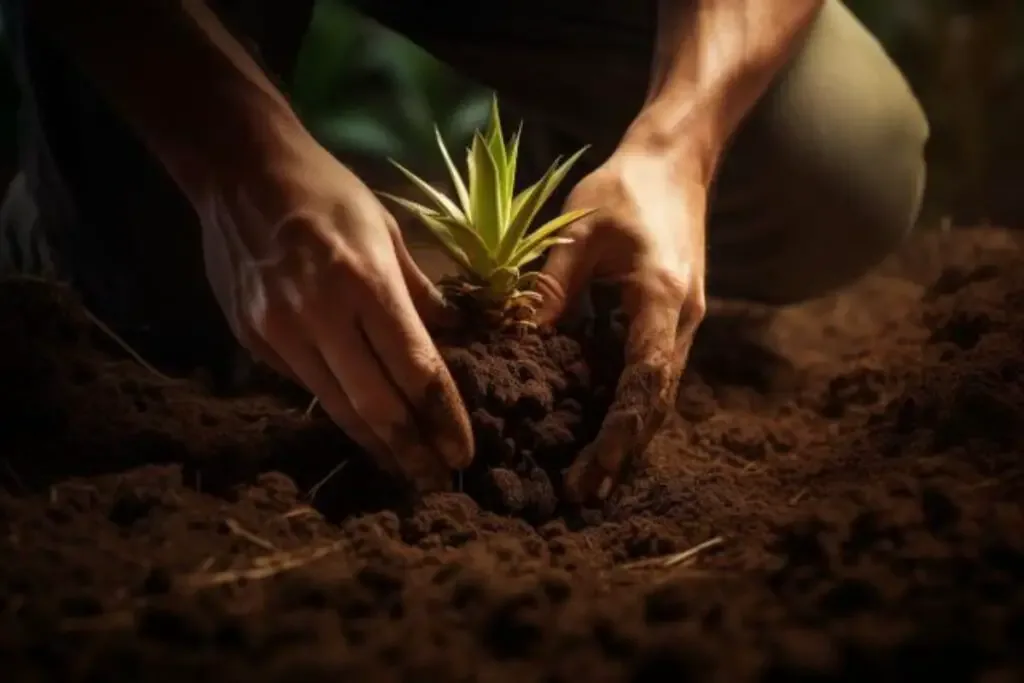
Pineapple plants can be grown from the top of a store-bought pineapple. Cut off the top, leaving some fruit attached, and let it dry for a day or two.
Then, plant it in well-draining soil, burying it up to the base of its leaves. You can also start a pineapple plant from a sucker or slip for faster fruit production. These are small shoots that grow between the leaves of a mature pineapple plant.
Light
Pineapple plants thrive in bright, direct sunlight. They need at least 6-8 hours of sun per day. If you’re growing a pineapple indoors, place it near a sunny window or supplement it with grow lights to ensure it receives enough light.
Soil
The ideal soil for a pineapple plant is well-draining and slightly acidic, with a pH between 4.5 and 6.5. You can use a commercial potting mix designed for cacti and succulents, or create your own mix with equal parts peat, sand, and perlite. Good drainage is crucial to prevent root rot.
Water
Pineapple plants are drought-tolerant and prefer to be on the drier side. Water the plant when the top inch of the soil feels dry.
Overwatering can be detrimental, leading to root rot. Ensure the pot has drainage holes if growing indoors.
Temperature and Humidity
Being tropical plants, pineapples prefer warm temperatures and high humidity. They do best in temperatures between 65°F and 85°F.
If you live in a cooler climate, it’s essential to keep your pineapple plant indoors during the colder months. Humidity can be maintained by misting the leaves or using a humidifier.
Fertilizer
Feed your pineapple plant with a balanced, water-soluble fertilizer once a month during the growing season.
Choose a fertilizer with equal parts nitrogen, phosphorus, and potassium (such as a 10-10-10 formula). Be cautious not to over-fertilize, as this can damage the plant.
Harvesting Pineapple
Harvesting a pineapple at the right time is crucial for optimal flavor. A pineapple is ready to harvest when its skin turns a golden color and gives off a sweet, tropical fragrance.
The leaves should also start to dry out. To harvest, simply twist and pull the fruit from the plant or cut the stalk close to the fruit.
Remember, pineapples do not continue to ripen after being harvested, so it’s important to pick them at the right stage.
Pruning
Pruning a pineapple plant is generally not necessary. However, you can remove any dead or damaged leaves to keep the plant healthy and tidy.
If the plant becomes too large for its pot, you may need to trim back some of the lower leaves to manage its size.
Propagating
Pineapple plants are commonly propagated through top cuttings, slips, and suckers. To propagate from a top cutting, twist off the crown from a ripe pineapple and remove the lower leaves.
Let the base dry for a few days before planting. Slips and suckers can be removed from a mature pineapple plant and planted directly into the soil.
These methods often result in quicker fruit production than starting from a seed.
How to Grow Pineapple From Seed
Growing pineapple from seed is a rare and time-consuming process, as most pineapples are seedless.
If you do find seeds in your pineapple, you can plant them in moist, well-draining soil and provide warm temperatures and bright light.
Germination can take several weeks or longer, and it may take several years before the plant produces fruit.
Growing in Pots
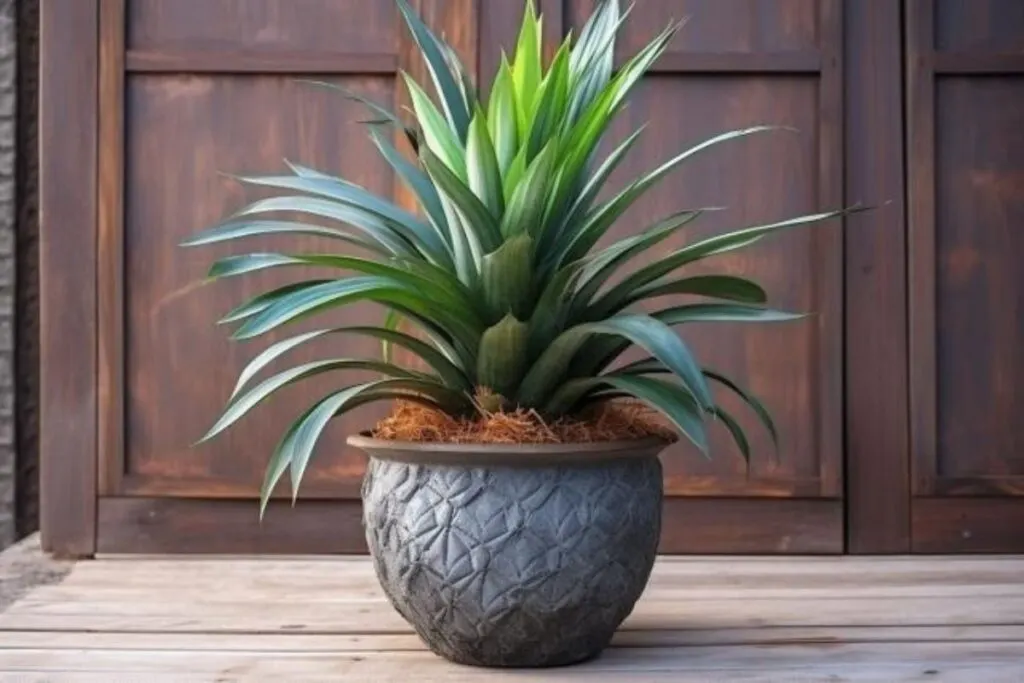
Growing pineapple in pots is an excellent option for those in cooler climates. Use a large pot with good drainage and a well-draining soil mix.
Place the pot in a sunny spot and water when the top inch of soil is dry. Be prepared to move the pot indoors during colder months, as pineapple plants are sensitive to frost.
With the right care, you can successfully grow and even fruit a pineapple plant in a container.
Overwintering
Overwintering a pineapple plant is crucial if you live in a region where temperatures drop below 65°F.
Pineapples are not frost-tolerant, so it’s important to bring your potted pineapple indoors before the first frost.
Place the plant in a bright, sunny window and reduce watering in the winter months. The goal is to keep the plant alive and healthy until it can be moved back outdoors in the spring.
Transplanting
Transplanting a pineapple plant is sometimes necessary as it grows. When the roots start to crowd the pot, it’s time to move it to a larger container.
Be gentle during this process as the roots can be delicate. Choose a new pot that is a few inches larger in diameter than the current one and use fresh, well-draining soil. After transplanting, water the plant thoroughly.
Common Pests & Diseases
Pineapple plants can be susceptible to pests like mealybugs and scale insects. These can usually be managed with neem oil or insecticidal soap.
Common diseases include root rot, which is often caused by overwatering, and leaf spot diseases. Ensure proper watering practices and good air circulation to prevent these issues.
Growing a pineapple plant is a unique and rewarding gardening venture. It offers a touch of tropical beauty to your home and the sweet satisfaction of growing your own fruit.
Patience is key, as it can take time for a pineapple plant to bear fruit, but the journey is as rewarding as the destination.
Embrace the learning experience and enjoy the vibrant growth and eventual harvest of your very own pineapple!

